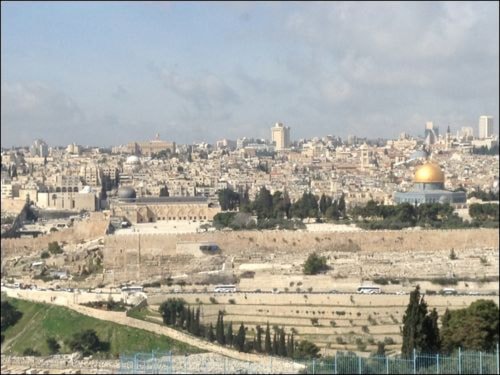How can there be peace in Jerusalem? Why does an area of land as big as the West Kootenay Boundary have so much potential for violence and bloodshed?
An Old Testament proverb that says, “Where there is no vision, the people perish,” or where there is no seeking God for his solution, people will suffer. It is hard to understand the magnitude of the problems that people in that area face.
Having walked in their shoes for one week, I have observed some of the tensions. There are at least three different groups of people that live in this land of promise.
There are Jewish people, who are returning to this area as a result of the United Nations resolution in 1947 to provide a homeland for them especially after the Holocaust where six million perished.
The Jews also believe that this land was promised to them by God as an everlasting possession. They lived here from the time of Abraham, Isaac and Jacob until the time of Christ, when Rome invaded and destroyed the Jewish temple. Some Jews remained in the land and many were dispersed to other countries.
The second group, the Palestinians, lived here thousands of years as well. They too rightfully claim Abraham as their forefather.
They are the descendants of Ishmael, son of Abraham by his concubine Hagar.
These people also claim that God promised them specific territory in Palestine, “He shall dwell in the presence of all his brethren,” (Genesis 16:12b), meaning among Jewish people. Many Palestinians claim seventh century Muhammad as their prophet; he led them to victory over adjacent tribes and established the city of Medina, Saudi Arabia as their base and the city of Mecca as the destination for a holy pilgrimage.
However they soon set their sights on Jerusalem as well. A century after Muhammad’s death, Jerusalem was taken by Islamic forces.
Through the centuries, Jerusalem was ruled by Muslims, Crusaders, Ottomans, the British (after the First World War) and by Jordan after the War of 1948.
When the Israelis fought back in 1967, they pushed back Jordan and kept Jerusalem.
Today both Muslims and Jews co-exist in Jerusalem and even worship in the same area – the Temple Mount of the Jews is also the sight of the Dome of the Rock and the Al-Aqsa Mosque.
The mosque’s outside wall is also the wall the Jews pray at – the Western Wall.
It is no wonder that tensions sometimes become physical and regrettably dangerous. There is another group that comes to Jerusalem. It comes as a pilgrimage to walk “where Jesus walked.”
It has no claim to the land or city. It treasures the history of Abraham and his descendants for from them came the Messiah, Jesus Christ, as was proven by his miracles, his death and his resurrection. These Christians cannot claim a perfect record in history – there are events and individuals that mar the ages and have hurt many innocent people.
So Christians can only claim the grace of the Lord Jesus Christ and seek to follow him closely in their lives.
Jesus’ message is one of peace and he taught his followers to be peacemakers.
It is only the power of the Christ who loved his enemies on the cross, when he prayed, “Father, forgive them for they know not what they do;” it is only his power that helps us forgive and to take responsibility for our own mistakes.
Today I understand more clearly the command of the Bible that says, “Pray for the peace of Jerusalem.”
Only the power of the Christ can help us in our world of selfish ambitions to find room for each other and live in peace and co-operation.
– John Siemens, is pastor of First Baptist Church in Grand Forks
